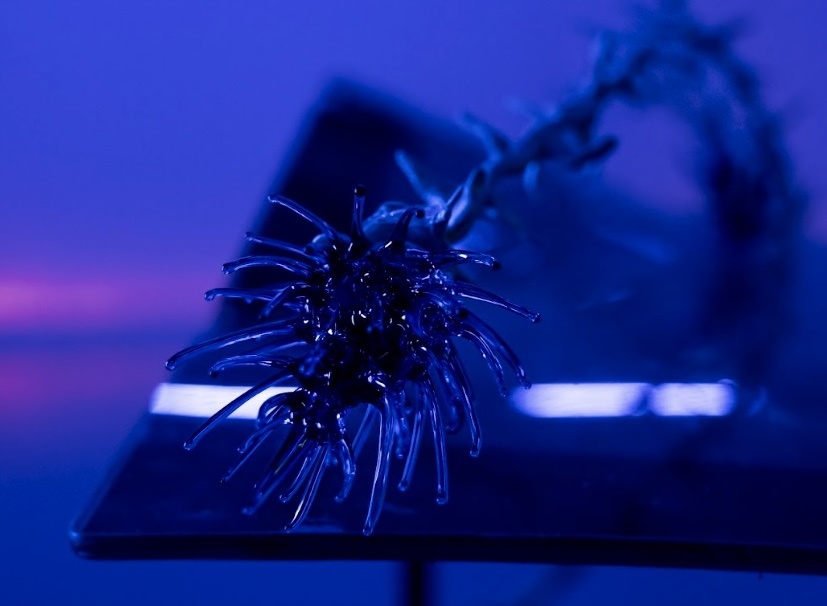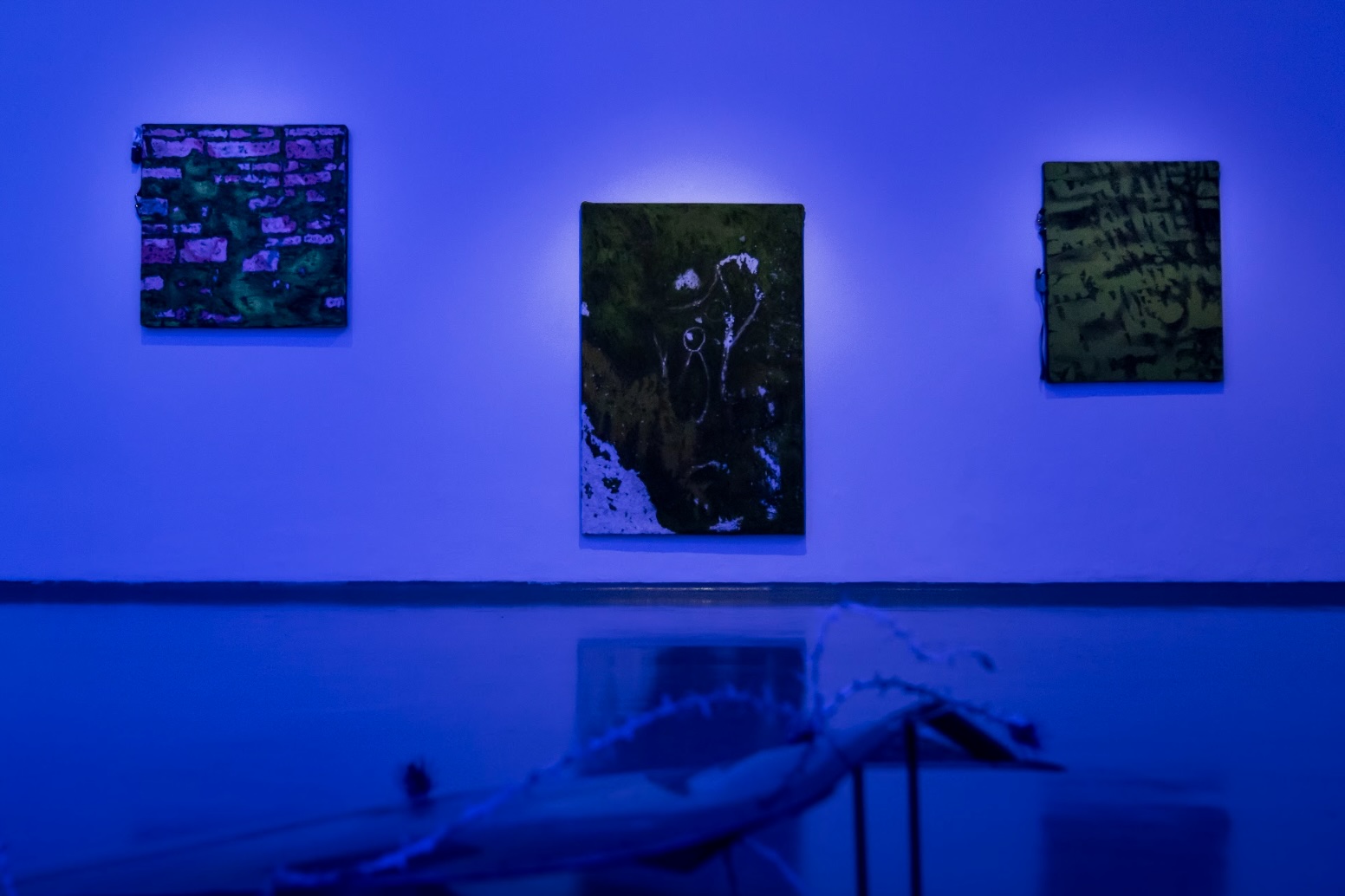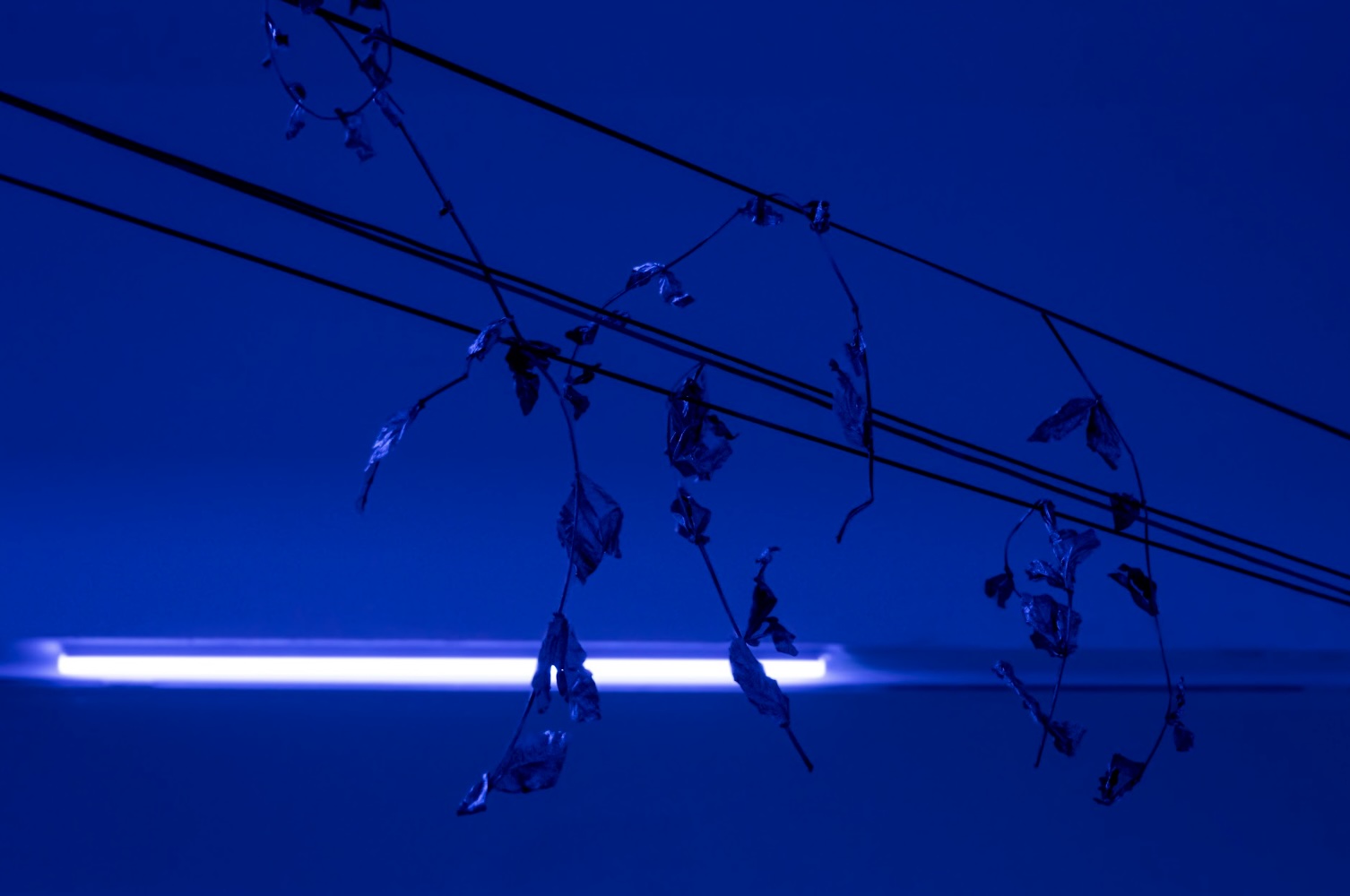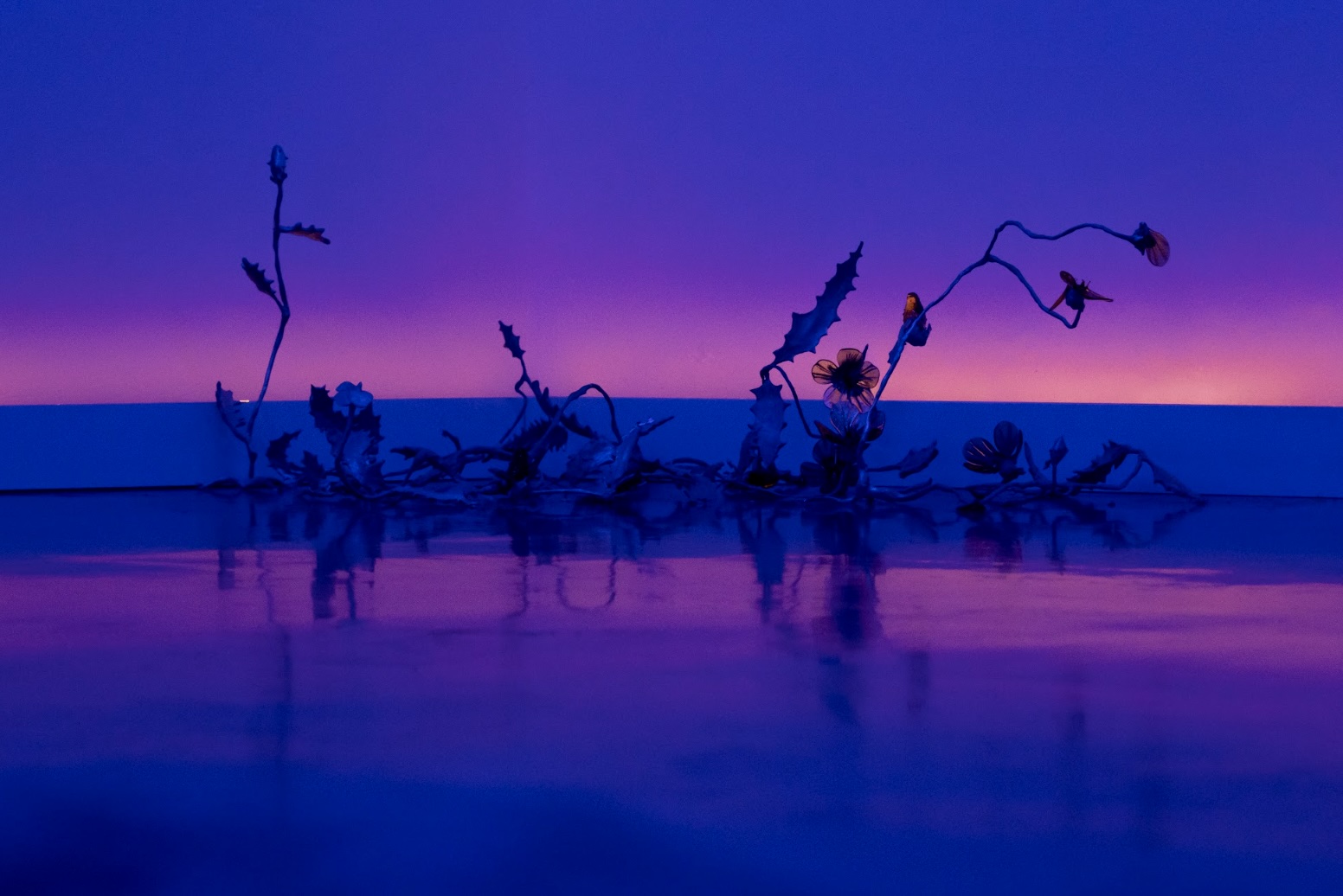
Review
It Could Have Been the End. On 'Recolectar a Florecer' by Ariana Díaz
by Juan Ki Buenrostro
at MURA
Reading time
5 min
Imagine falling, but there’s no ground.
—Hito Steyerl, In Free Fall, 2010
Provoke the future. Consider your options. Not necessarily those involving disaster. Outcomes might stem from the last time you were truly yourself before something meaningful. Continue like this until you find yourself within an absence of massive scale. Don’t just fantasize about the end of your relationships—whether emotional, intellectual, affective, or subtle. It could be any gesture of mutual correspondence.
Begin with something intimate, something that is yours alone: a street sign reminding you where you're headed, a commercial between music tracks, a photo or recurring video on your phone.
Let the familiar expand into the unknown. Move from the construction of cities to the fading of nations and continents. Carry on to the world, to the atmosphere. Reach out into space, with all its planetary bodies and astronomical phenomena—go further still: destroy the Milky Way. Let your thought dissolve everything in the universe. Do not grieve the loss of what matters to you. It’s not selfishness—it's just that, in comparison to everything else, we are very small.
More than scientific, this is a fiction about an event that would lead us to nothingness. What would the extinction of the cosmos be like? What would disappear first? Would it happen quickly? Would it hurt? What if it didn’t? What if no one noticed? What if it felt like nothing changed?

It could have been the end. And yet, it isn’t. What I describe are the images awakened (in me) by Recolectar a Florecer, an exhibition by Guadalajara-based artist Ariana Díaz, on view at the Museo Raúl Anguiano (MURA) from February 2 to April 16, 2025. The show consists of ten works, mostly paintings—Fábula para el día de mañana I, II, III —though it also includes an installation, Tensión, and a sound collaboration with Sarah Monroy. The curatorship is by Florencia Pardo, with text by Aldo Arellano Paredes.

The exhibition draws from Silent Spring (1962) by American marine biologist Rachel Carson, a study of how landscapes are transformed by the displacement of endemic species like birds, driven by commercial interventions linked to real estate development and the fractures caused by industrial expansion.
Díaz’s work doesn’t speak explicitly of nuclear disaster, alien invasions in the cosmos’s final days, or viruses born from the mistreatment of avian diseases. Or perhaps it does, and all of the above happens. Anything is possible. Díaz proposes a reversal: a world in which ecosystems and their displaced inhabitants reclaim their territories.
In an interview conducted on April 6, 2025, Ariana states: “The exploration of light is the main part of my installation work and, really, where my experience comes from.” This connects with her background as a visual artist and her specialization in photography. She continues: “…my main interest lies in tracing how light defines a space—understanding that we are constantly stimulated by it and that it shapes the energy and function of each day.”
In this post-apocalyptic imaginary, Díaz pushes her exhibition devices into ruin: horizons dominated by blues and oranges mix with purples from stones and greys born from samples of metal and other unstable materials. It’s important to note that these elements are not decorative—they are both tools and scenographic objects. In the spirit of Hito Steyerl, light and sound function as languages that shape a dystopian immersive experience within the exhibition design.
To witness Monroy’s sound piece in tandem with the lighting intervention and Díaz’s paintings and installations is to experience the show as a lived mechanism—an exhibition strategy that resonates with the work of artists like Olafur Eliasson or James Turrell. According to Ariana, Monroy’s participation “was a necessity—to listen to the pollutants that, at that time of day, intersect with the natural landscape.” This contributes to a broader reflection on “how we re-inhabit the possibilities of our environment amid the urgency of our current ecosystems.”


Díaz’s installations incorporate shattered windshields, stones of various sizes, and remnants of metal mesh. In works like Florecer and Sucumbir ante la dureza de las piedras II, both from 2025, these elements were salvaged. Even in these (de)composed landscapes, flowers still persist, as seen in Recolectar a Florecer, made with ethylene-vinyl acetate, acrylic, and blown glass. On this, Díaz comments: “All these materials are recovered. They’re here to help generate other ecosystems. It’s not about using new materials, but activating and making possible what we already have at hand.” The shared vulnerability between species reaffirms the responsibility social communities hold toward their members—and toward the species with which they coexist.

I return to a suggestion. Not a warning—just a possible option. Provoke the future. It could have been the end. And it is.
Translated to English by Luis Sokol
Published on April 12 2025